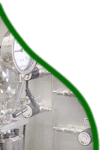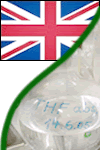 |
 
|
| |
Veranstaltungen 2005
2009
2008
2007
2006
2005
Dr. Fuk-yee Kwong ,
Hong Kong. Polytechnic University, Hong Kong. Asymmetric
Pauson-Khand-type Cyclizations and Development of Simple and Efficient
Phosphine Ligands.
Prof. Dr. Kingsley Cavell ,
England,
Chemistry Cardiff
University. Some recent developments in N-heterocyclic carbene
chemistry: Carbenes as ligands and as substrate.
Prof. Dr. Serafino Gladiali ,
Italien, Universität Sassari. Chiral Ligands with Pyridine N-donors:
now and then (and later on?).
Prof. Dr. Miquel A. Pericas ,
Spanien, Institute of Chemical Research of Catalonia, Tarragona.
Modular Approaches to Asymmetric Catalysis on Different Platforms.
Prof. Dr. Uwe Pischel ,
Portugal, Universität Porto. Molecular Switches and Devices Based on
Aromatic Dicarboximides.
Prof. Dr. Johannes G. de Vries ,
Niederlande, DSM Research, Geleen, and Universität Groningen. The
combinatorial approach to asymmetric hydrogenation: MonoPhos,
ruthenacycles and artifical enzymes.
Prof. Dr. Alois Fürstner ,
Deutschland, MPI für Kohlenforschung, Mülheim.
Prof. Dr. Benjamin List ,
Deutschland, MPI für Kohlenforschung, Mülheim. Asymmetrische Enamin
Katalyse: Die Wiederentdeckung der
Hojos-Parrish-Eder-Sauer-Wiechert-Reaktion.
Prof. Peteris Trapencieris ,
Lettland, Riga, Institut für Organische Synthese. Adventures in the
Chemistry of Aziridine-2-Carbocyclic Acid.
Prof. Dr. Antonio M. Echavarren ,
Spanien, Tarragona, Institute of Chemical Research. Selective
Activation of Alkynes by Gold Complexes.
Prof. Dr. Klaus-Dieter Weltmann ,
Deutschland, I.N.P. Greifswald. I.N.P. Greifswald – Forschungsthemen
im Überblick.
Dr. Olaf Kühl ,
Deutschland, Universität Chemnitz. Bestimmung der effektiven
Donorstärke von Phosphanen und verwandten Liganden: Experiment und
Theorie.
Dr. Rocco Paciello ,
Deutschland, BASF AG, Ludwigshafen. Industrial Hydroformylations.
Prof. Dr. Michael Dröscher ,
Deutschland, Degussa, Düsseldorf. Ganzheitliches Katalysekonzept:
Heterogene, Homogene und Biokatalyse.
Prof. Dr. Robert Schlögl ,
Fritz-Haber-Institut, Berlin. Warum sind Nano-Strukturen bedeutend
für die Heterogene Katalyse?
Prof. Dr. Henri B. Kagan ,
Orsay, Frankreich. Development of Asymmetric Katalysis – A Personal
Account.
Prof. Dr. Peter Hofmann ,
Universität Heidelberg. New Catalyst for an Old Reaction: From
Mechanism, Theory and HAT-Screening towards Highly Efficient Ligand
Systems for Hydromormylation.
|
|
|
 
|
 |
|






